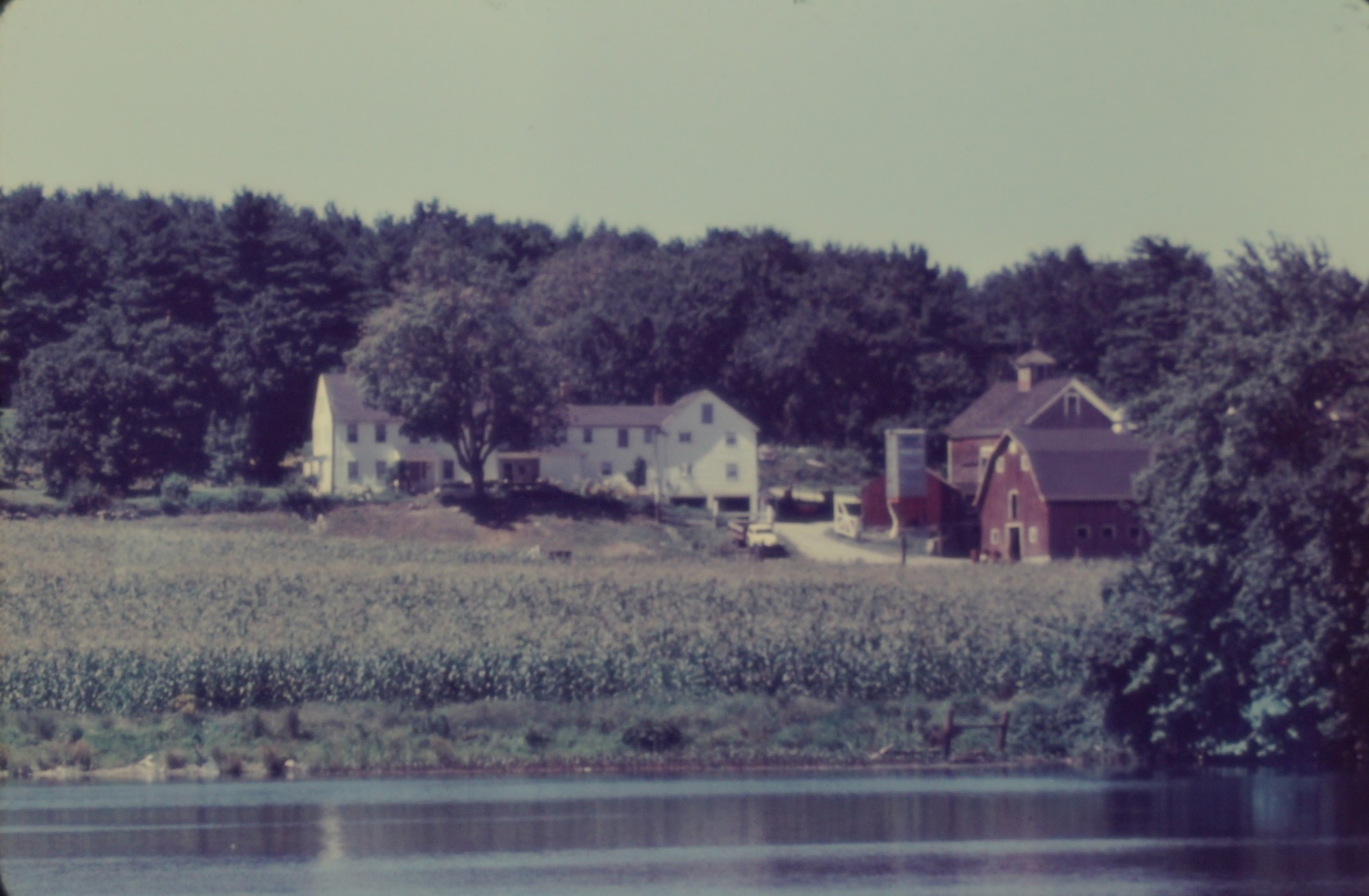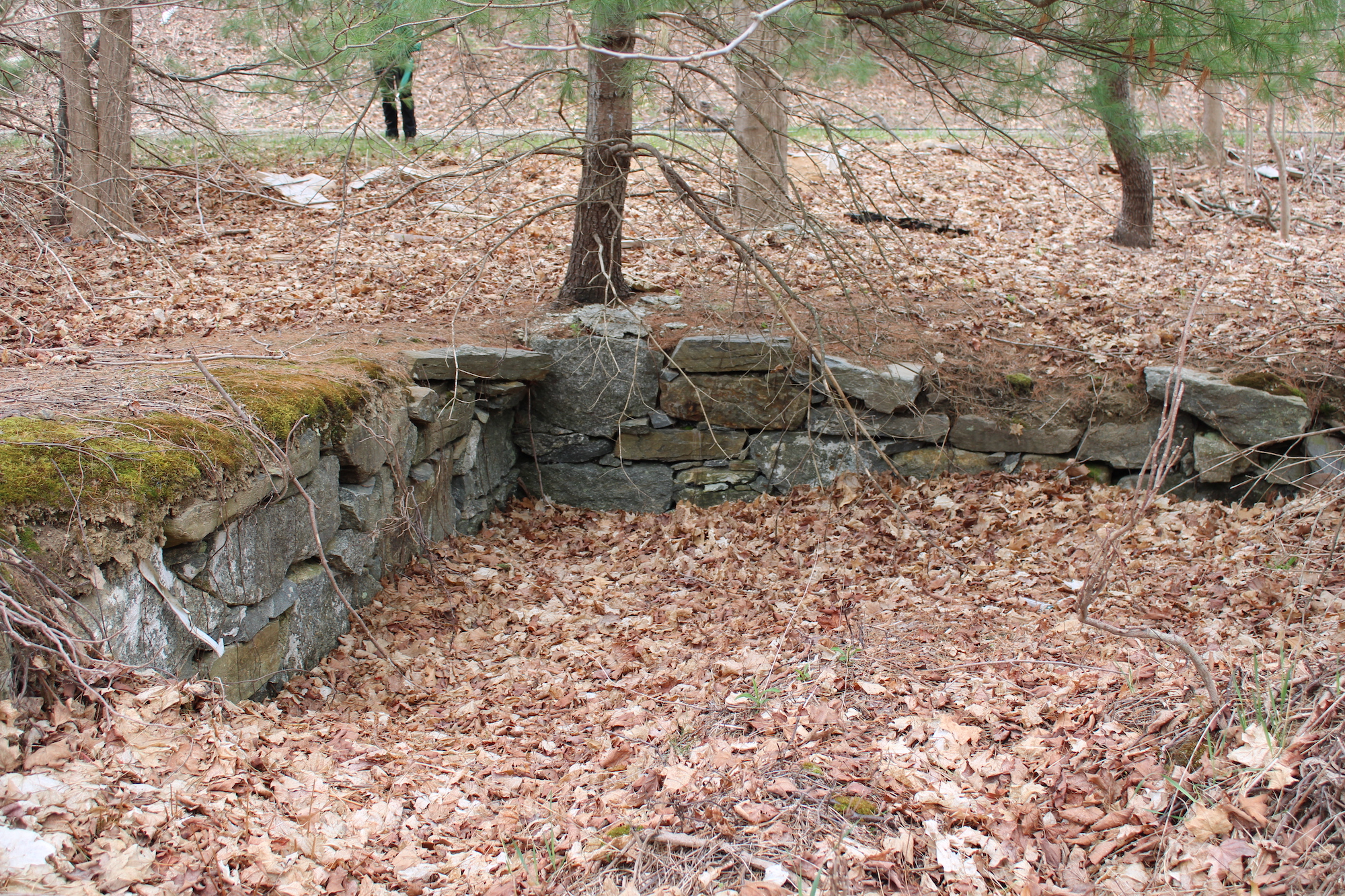
NORTHBOROUGH – Before Interstate 290 existed and the businesses along Bearfoot Road were built as part of one of Northborough’s industrial areas, a 120-acre farm owned by the Sparrow family extended from Colburn Street north to where the 290 interchange is today on Solomon Pond Road.
In the 1700s and 1800s, the land was property of the Warren and Hilliard families. By 1967 it was a 120-acre-plus farm owned by Hermon Sparrow, Jr. (1914-1988), a self-employed dairy farmer whose grandfather had purchased the farm in the early 1900s. At its peak, 120 milking cows roamed the property, and the land was also cultivated for corn and hay. The Sparrows sold the milk—160,000 gallons a year—to local dairy farms, including Deary Bros. Dairy of Webster.
A farmhouse, built in 1744, no longer exists but was at the junction of Colburn and Rice Streets. Today, you can see the hole where the house stood on the north side of Colburn Street at the crest of the hill, now the National Grid property at 55 Bearfoot Road. The house overlooked Solomon Pond, and the family owned about a quarter of the pond’s shoreline.
In a 2001 interview, Philip Sparrow (1938-2008), the eldest son of Hermon who ran the farm with his father, recalls starting chores such as milking and feeding at five a.m. and then coming home from school to feed the baby calves. Ten acres of the land was pasture, located three acres up from Solomon Pond. He recalls that, during his youth, Northborough had 25 cow farms, eight chicken farms, and five market gardens.

Farming continued until the late 1960s, at which time Philip Sparrow sold the remaining land, which had already been fragmented by the state’s taking by eminent domain 70 acres for the construction of I-290 and the Sudbury-Assabet Valley flood control project. You can see a remnant wood road by the 290 entrance near the Berlin border. Philip and his family moved to Vermont in 1970 and continued farming there.
In September 1978, just over 28 acres were deeded to Raytheon Corporation, and then in December 1994 National Grid purchased the property and operates there today. Where the National Grid parking lot now stands is where hay was chopped and loaded into a silo. There was also an apple orchard, which extended about five acres along Colburn Street. Hermon Sparrow built the house at 63 Colburn Street, which still stands today.
A trail along the perimeter of the 55 Bearfoot Road property allows one to see remnants of the farm that will take you back to the pre-industrial days. Along Colburn Street you can spot a stone foundation. On the south side of the property where there is a view of Solomon Pond, you can see where there was once a swimming area in the 1930s. The pond was also a source of ice for local distribution and refrigerated railroad cars until the mid-1900s.

















